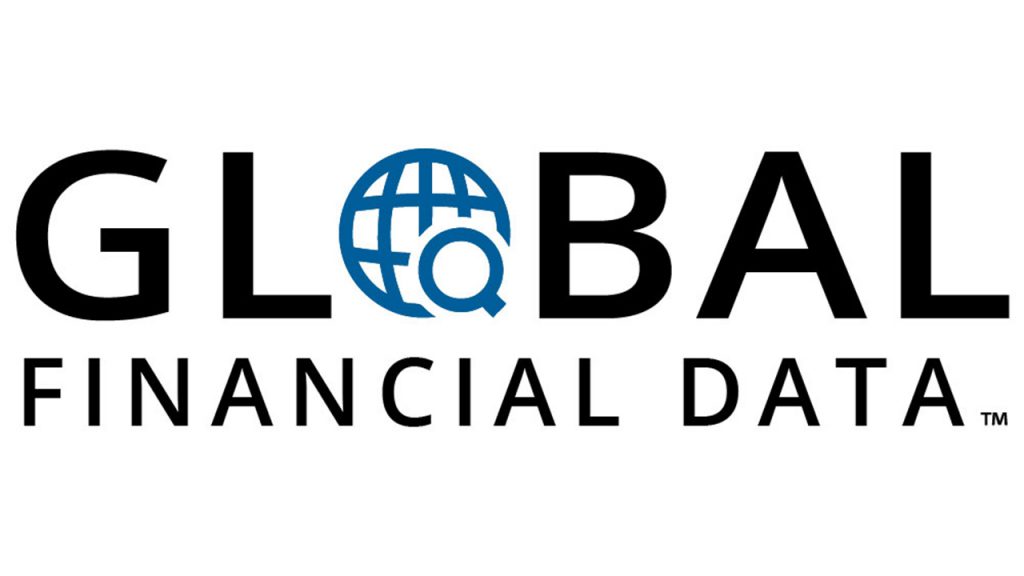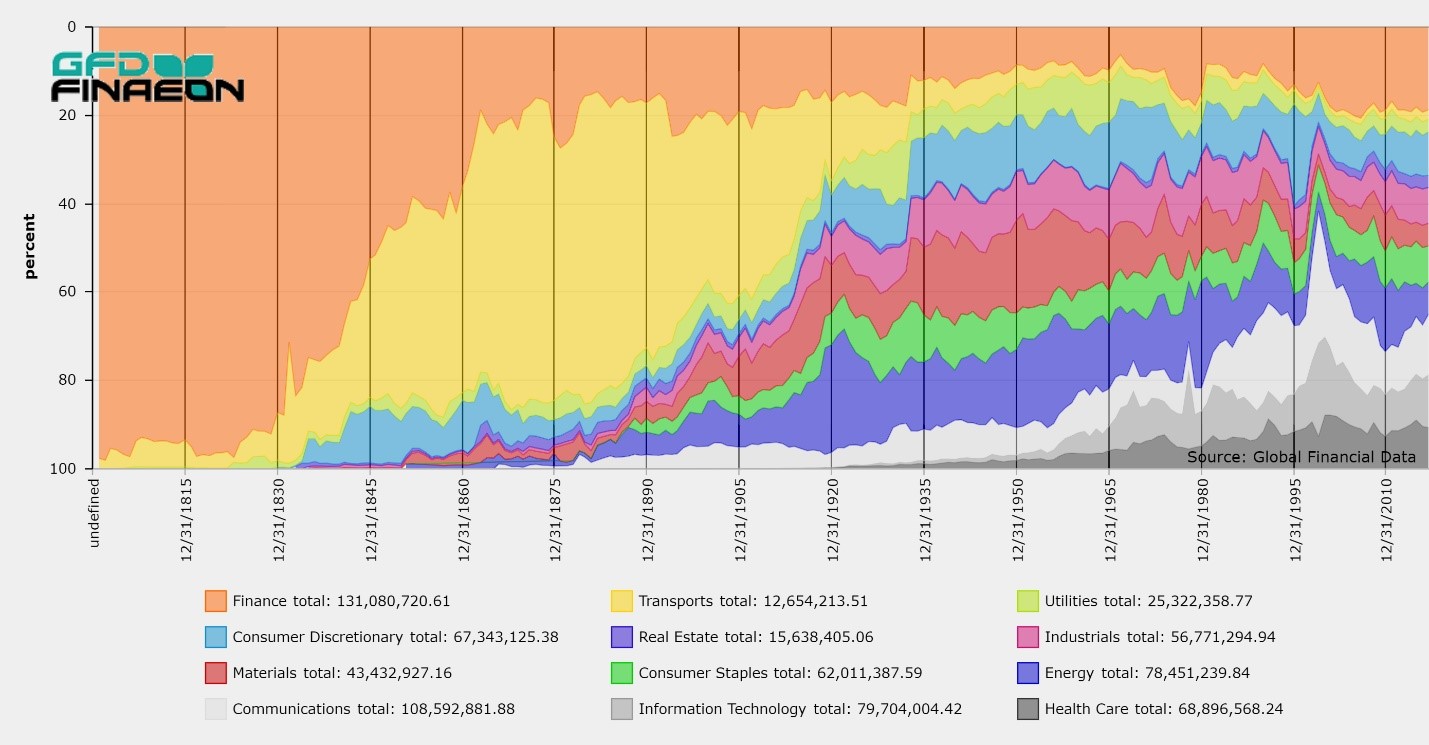 The government of Zimbabwe announced this week that they were finally demonetizing the Zimbabwe Dollar. Although the United States Dollar replaced the Zimbabwe Dollar in every day transactions back in 2009, banks still carried accounts that were denominated in Zimbabwe Dollars. Beginning on June 15, 2015, for only 35 quadrillion (35,000,000,000,000,000) Zimbabwe Dollars bank customers will receive one free portrait of George Washington. This opportunity expires in September.
Believe it or not, Zimbabwe will not get in the Guinness Book of World Records for the most insane currency conversion. Hungary holds this dubious record because 400,000 quadrillion pengo were required to obtain one forint back in 1946 when Hungary went through its own currency conversion.
The government of Zimbabwe announced this week that they were finally demonetizing the Zimbabwe Dollar. Although the United States Dollar replaced the Zimbabwe Dollar in every day transactions back in 2009, banks still carried accounts that were denominated in Zimbabwe Dollars. Beginning on June 15, 2015, for only 35 quadrillion (35,000,000,000,000,000) Zimbabwe Dollars bank customers will receive one free portrait of George Washington. This opportunity expires in September.
Believe it or not, Zimbabwe will not get in the Guinness Book of World Records for the most insane currency conversion. Hungary holds this dubious record because 400,000 quadrillion pengo were required to obtain one forint back in 1946 when Hungary went through its own currency conversion.
The Zimbabwe Dollar Is Born
Zimbabwe was originally a British colony known as Rhodesia, named after Cecil Rhodes who obtained a mining concession from a local king. The colony of Rhodesia declared its independence on November 11, 1965, but because it did not allow blacks any representation in the government, Britain imposed sanctions against Rhodesia. On March 3, 1978, Ian Smith signed an agreement to provide black majority rule in Rhodesia. The country was renamed Zimbabwe Rhodesia on June 1, 1979, and Zimbabwe declared its independence on April 17, 1980. The country’s currency was originally the Rhodesia Pound which was introduced at par with the British Pound Sterling. The Rhodesia Dollar (RHD) replaced the Rhodesia Pound on February 17, 1970 with 2 Rhodesia Dollars equal to 1 Rhodesia Pound. The Zimbabwe Dollar in turn replaced the Rhodesia Dollar at par on April 18, 1980. When this conversion occurred, a Zimbabwe Dollar was valued at 1.47 United States Dollars, but because Zimbabwe had higher inflation than the United States, the Zimbabwe Dollar steadily depreciated against the U.S. Dollar.Inflation Explodes
The combination of decreases in farm production following large land redistributions, a decline in the production of goods, a collapse of the banking system, involvement in the Second Congo War in 1998, and a drought in 1999, led to a steady decline in production. Zimbabwe suspended foreign debt repayments in February 2004, resulting in compulsory suspension from the IMF. This combined with sanctions imposed by the United States, the IMF and the European Union led to large budget deficits which could only be covered by printing money, eventually leading to hyperinflation. The inflation rate in Zimbabwe averaged around 10% in the 1980s, around 20% to 30% between 1990 and 1997, and 50% between 1998 and 2000. In 2001, the inflation rate exceeded 100%, and in 2003 it was almost 600%. At that point, hyperinflation kicked in. Inflation rose to 1281% in 2006, and 66,000% in 2007. In 2008, the money supply grew by 658 billion percent and inflation hit an annualized 80 billion trillion percent (89,700,000,000,000,000,000,000) toward the end of 2008. At that point, Zimbabwe Dollars were about as valuable as toilet paper.Hyperinflation Makes Life Miserable
The main cause of Zimbabwe’s inflation was the excessive money growth of the Zimbabwe Dollar, but officials tried to place the blame elsewhere. In 2007, for example, Zimbabwe declared inflation illegal (!), outlawing price increases on some commodities. The government even arrested some executives for increasing prices on commodities. Other problems occurred. People found it difficult to take money out of ATM machines because the ATMs couldn’t handle values in billions and trillions. Customers received a “data overflow error” and weren’t able to withdraw anything. By the time the ATM machines were fixed and the ATMs allowed customers to withdraw Z$100 billion per day, that amount wasn’t enough to cover the cost of a loaf of bread. If a customer wrote a check to purchase something, they were required to write the check for twice the cash price of the item to cover the impact of inflation by the time the check cleared. During the 2000s, Zimbabwe went through four currencies in four years. On July 31, 2006, Zimbabwe introduced a new Dollar with 1000 old Zimbabwe Dollars (ZWD) equal to 1 Second Zimbabwe Dollar (ZWN). On August 1, 2008, 10 zeroes were removed with 1 Third Zimbabwe Dollar (ZWR) equal to 10 billion Second Zimbabwe Dollars. On February 2, 2009, a Fourth Zimbabwe Dollar (ZWL) was introduced, removing 12 zeroes, with 1 Fourth Zimbabwe Dollar equal to 1 trillion Third Zimbabwe Dollars. Thus 1 Fourth Zimbabwe Dollar was equal to 10 trillion trillion (10,000,000,000,000,000,000,000,000) first Zimbabwe Dollars.Dollar One, Dollar Two, Dollar Three, Dollar Four
The hyperinflation produced a dazzling array of currency denominations. The highest denomination for the first Zimbabwe Dollar was 100,000 Dollars. When the first Zimbabwe Dollar was converted into the second Zimbabwe Dollar at 1000 to 1, paper currency equal to One Zimbabwe Cent was printed so old 10 Zimbabwe Dollar notes could be converted. Within a year, the Reserve Bank of Zimbabwe was printing a 100 Billion Dollar note. In total, 32 different denominations of the Zimbabwe Dollar were printed within one year.
The fourth Zimbabwe Dollar died a quick death, only reaching the Z$500 denomination before the currency was cast aside. Foreign currency was effectively legalized as a de facto currency on September 13, 2008, and on January 1, 2009, the Reserve Bank of Zimbabwe allowed U.S. Dollars to circulate freely throughout the country. The Fourth Zimbabwe Dollar remained legal tender until June 30, 2009 by which time it has lost 95% of its value in the five months of its existence. By then, transactions were almost exclusively in U.S. Dollars, the Zimbabwe Dollar having been abandoned.
Clever Financial Calculations
With inflation galloping ahead on a daily basis, and the Reserve Bank of Zimbabwe updating exchange rates infrequently, it was difficult to know how little the Zimbabwe Dollar was really worth.The Dollar is Dead, Long Live the Dollar
Since 2009, Zimbabwe has had no currency of its own. It has had to rely upon paper currency imported from other countries to act as a medium of exchange. Since foreign currency is scarce, the economy has suffered from deflation rather than hyperinflation because currency was scarce. Another problem Zimbabwe has faced since 2009 is that the country has no locally minted coins to carry out every day transactions. Stores improvised by using pieces of candy to make change rather than using coins. In 2015, the Reserve Bank of Zimbabwe tried to alleviate the coin shortage by putting new “bond” coins into circulation; however, as one person put it, consumers were distrustful of any coins that didn’t have an American president on them. Today, the United States Dollar is the medium of exchange in Zimbabwe and inflation has been defeated. Prices declined in Zimbabwe by 0.8% in 2014 after rising 0.3% in 2013. Zimbabwe has gone from being the king of hyperinflation to having a lower inflation rate than the United States! Will Zimbabwe reintroduced a new Zimbabwe Dollar in the near future? Probably not. People in Zimbabwe have lost all trust in the government’s ability to control inflation. Other countries that dollarized as a result of inflation, such as Ecuador, remain dollarized years after the U.S. Dollar was introduced. In Zimbabwe the saying should be, “The (Zimbabwe) Dollar is Dead, Long Live the (U.S.) Dollar.” I have written about numerous scammers who used the stock market to defraud investors of their money, but one of the towering figures of this repulsive group of is Barry Minkow. I refer to him as the Frankenstein of Fraudsters because he is a con man who refuses to die, finding new kinds of fraud when he could no longer pursue his previous criminal activities. If there was a way to cheat people of their money, Barry Minkow found it.
I have written about numerous scammers who used the stock market to defraud investors of their money, but one of the towering figures of this repulsive group of is Barry Minkow. I refer to him as the Frankenstein of Fraudsters because he is a con man who refuses to die, finding new kinds of fraud when he could no longer pursue his previous criminal activities. If there was a way to cheat people of their money, Barry Minkow found it.
Birth of a Salesman
Barry Minkow wanted to achieve the American Dream of financial success. The “boy wonder” began pursuing his dream when he was nine years old and got a job as a telemarketer with the carpet-cleaning business his mother worked at. Six years later, he started his own business, ZZZZ Best out of his parents’ garage with three employees and four phones. He became the most successful teenage businessman in the United States. Since he wasn’t old enough to drive, he had to rely upon friends to transport him to different jobs. Since he was under 18, he did not have the legal right to write his own checks. Two banks closed his checking accounts before he got a local businessman to provide him with money orders and cash his checks. Minkow’s business faced cash flow problems from the beginning, so he funded his business through check kiting, stealing his grandmother’s jewelry, staging break-ins at his offices to commit insurance fraud, running up fraudulent credit card charges, and borrowing money from gangsters at usurious rates. Minkow found the secret to a successful business through “insurance restoration” in which he would file an insurance claim for restoration of a business from flood, fire or other damage. Minkow used insurance restoration as a cover for the money he was obtaining fraudulently. With the help of Tom Padgett, an insurance claims adjuster, he learned how to file fraudulent insurance claims to get money from banks and insurance companies. Tom Padgett was a genius at creating a paper trail of business that didn’t exist. Minkow set up a fake company, Interestate Appraisal Services, which verified the details of Minkow’s non-existent restorations for the banks. ZZZZ Best actually did clean carpets, but 85% of the company’s revenues were from the fraudulent insurance restoration business. When ZZZZ Best had cash flow problems, the only way Minkow could raise more money was by promising to expand his business, but since the business was losing money, this only created more losses which had to be covered up with new fraudulent activities.The American Dream Becomes a Nightmare
In 1986, shortly after graduating from high school, Minkow took ZZZZ Best public. This raised over $11 million for ZZZZ Best after fees and costs, but even this wasn’t enough to pay off all the debts Minkow had accumulated while building his business. One problem going public created was that Minkow had to provide audited accounts to comply with SEC rules. Minkow got around this by having Tom Padgett forge fake invoices, fake bank statements, fake business correspondence, and creating a paper trail that was impressive on the surface as long as no one investigated the actual activities of the company. Since the accountant who audited the ZZZZ Best’s books never visited the insurance restoration sites the company owned, he never discovered they were nothing more than mail boxes. In 1986, shares issued to an officer could not be sold for two years. Once the two years were up, Minkow could sell his shares, cover his criminal tracks and achieve the American Dream of being a successful multi-millionaire entrepreneur. ZZZZ Best was like a Ponzi scheme in that the company had to continually get new investors to put money into the company to cover the debts Minkow had built up from previous investors. Minkow borrowed from Peter to pay Paul. Minkow just had to stay afloat until the two years were up, he could pay everyone off and be clear of his past. The initial public offering of ZZZZ Best stock raised $15 million, making Minkow the youngest person to lead a company through an IPO in the history of Wall Street. Flush with cash, Minkow wanted to make ZZZZ Best “the General Motors of the carpet-cleaning business.” Minkow used a massive television campaign (the commercials can be found on You Tube) to expand his business across California and into Arizona and Nevada. As a result of the company’s continual expansion, by 1987, ZZZZ Best had over 1000 employees. The stock price climbed to $18 a share, giving ZZZZ Best a capitalization of $280 million and making Minkow worth over $100 million. Nevertheless, ZZZZ Best still had cash flow problems since the legitimate side of the business only generated 15% of the company’s revenues. A potential solution to Minkow’s cash flow problems was to buy KeyServ, the authorized carpet cleaner for Sears, from its British parent. KeyServ’s carpet cleaning business was a cash cow and would provide a much needed cash infusion to ZZZZ Best to tide him over until the two year share restriction expired. KeyServ was twice the size of ZZZZ Best, but this didn’t stop the company from moving forward with the $25 million purchase of KeyServ. Minkow went to Drexel Burnham Lambert to issue junk bonds to fund the acquisition. With the KeyServ acquisition, Minkow could cover his tracks, pay off his ill-begotten debts and become the CEO of a legitimate and successful business. Minkow’s ambitions didn’t end there. After absorbing KeyServe, Minkow planned to take over ServiceMaster, the leader in the industry, in a hostile takeover, and to expand into the United Kingdom. He even began discussions to buy the Seattle Mariners. Just as in a Shakespearean tragedy, with the KeyServ deal only days from being completed, Minkow’s past came back to haunt him and all his dreams of success and legitimacy collapsed. In the course of a couple weeks, Minkow went from being a multi-millionaire to being both broke and a criminal.
Minkow faced charges of credit card fraud from numerous people, which he blamed on unscrupulous contractors, even though he knew this was a lie, and he paid off most of the claimants; however, one homemaker whom he had overcharged several hundred dollars became his undoing. That a company worth several hundred million dollars could be undone by a debt of a few hundred dollars is ironic. When Minkow ignored the homemaker’s requests for repayment, she found several other people who had been cheated by Minkow. She went to the Los Angeles Times with her story, and the newspaper published an article about Minkow’s credit card fraud days before the KeyServ deal was to close.
Praise the Lord, I’m Released from Prison
While preparing for his incarceration, Minkow, whose family was Jewish, became a born-again Christian, and while in prison completed his theological coursework through Liberty University’s School of Lifelong Learning. Minkow was released from prison in 1995, and he became the Director of the Bible Institute and Pastor of Evangelism at the Church at Rocky Peak in Chatsworth, California. In 1997, he became pastor of the Community Bible Church in San Diego. While at the church, Minkow started the Fraud Discovery Institute which focused on finding fraud in penny stock companies. It takes a thief to catch a thief, and Minkow is alleged to have uncovered over $1 billion in fraud from the companies he investigated. His success brought him to the attention of 60 Minutes, The Wall Street Journal, and Bloomberg News. Minkow began appearing on TV as a fraud expert. Minkow realized he could profit from his reports on other companies’ frauds. Before releasing a report on the fraudulent behavior of a company, Minkow could short the stock and profit from the decline in the price of the stock that followed. Minkow was accused of “short and distort” to profit from the companies’ downfalls. Small fry bring small profits. To get a large profit, you have to catch a large fish. This was Minkow’s next step. Minkow revealed that Herbalife’s President had inflated his resume, providing Minkow $50,000 in profits from shorting Herbalife stock. He also received a $300,000 settlement with the company. Minkow’s next target was the homebuilder Lennar, whom he accused of massive fraud and of being a Ponzi scheme. Talk of the pot calling the kettle black!Short and Distort
After Minkow’s accusations were made, Lennar’s stock collapsed from $11.57 to $6.55. Minkow had been contacted by Nicholas Marsch, who had filed two lawsuits against Lennar for fraud. It turned out that not only had Minkow bought $20,000 worth of puts on Lennar before attacking the company, but Minkow had gone long the stock after the price fell, anticipating Lennar stock would bounce back.
Accused of trying to profit from his own inside information, Minkow lied about his actions, but after the evidence presented itself, Minkow could no longer hide his deceitful activities. Florida Circuit Court Judge Gill Freeman found that Minkow had repeatedly lied under oath, destroyed or withheld evidence, concealed witnesses and deliberately tried to “cover up his misconduct.” The Judge issued terminating sanctions against Minkow, in effect revoking his right to defend himself.
Because of Minkow’s purchase of puts on Lennar stock, he plead guilty to one count of insider trading on March 30, 2011. On July 21, 2011, Minkow was sentenced to five years in prison and was ordered to pay $583.5 million in restitution to Lennar. As part of his pre-sentencing evaluation, Minkow was diagnosed by Dr. Michael Brannon as having antisocial personality disorder, narcissistic personality disorder, attention deficit hyperactivity disorder, anxiety disorder, opioid dependence, and anabolic steroid abuse.
Joining Other Pastors in Prison
As a result of his criminal behavior, Minkow resigned as senior pastor of Community Bible Church. It turned out that Minkow had used church funds to fund the Fraud Discovery Institute, and he had swindled several members of his church, asking one woman for $300,000 to fund a movie about his redemption and another for $75,000 to fund a hospital in Sudan. Minkow admitted to embezzling over $3 million from the church between 2001 and 2011. During those ten years, Minkow opened unauthorized bank accounts, forged signatures, diverted church money for personal use, and charged unauthorized personal expenses to church credit cards. As a result of his church-related activities, Minkow plead guilty to one count each of conspiracy to commit bank fraud, wire fraud, mail fraud and to defraud the federal government. Minkow received a sentence of five years to be served after he completed his securities fraud sentence. The earliest Minkow can be released from prison for these two crimes is June 6, 2019. After he is released, he will owe over $600 million in restitution for the convictions relating to ZZZZ Best, Lennar and the Community Bible Church.After Prison?
From the very beginning, Minkow ran ZZZZ Best by borrowing from Peter to pay Paul, but in the worst possible way, committing credit card fraud, borrowing at usurious rates, forging documents, kiting checks, claiming that the company was receiving huge, increasing revenues when 85% of his income was non-existent. At every step of the way, his frauds and deceits threatened to blow up in his face, and finally they did. It is amazing that in some ways, Minkow was so incredibly brilliant, and in other ways, abysmally stupid. No CEO in their right mind would pay 5% interest per week on a loan, but Minkow did. A con man always thinks he can avoid getting caught, but fraud is a house of cards that eventually collapses. Like any con man, Minkow was able to transform himself to continue conning people in new ways. In his book, Clean Sweep, like a reformed sinner, he proudly proclaimed what a crook he was. After being released from prison, Minkow became a fraud investigator who focused on undoing other people’s frauds, and he became a pastor in order to lead people to God. Minkow worked with the FBI, the SEC, and police departments to uncover the frauds of others, but eventually gave into temptation and committed new frauds. Only someone who was willing to commit fraud on his level would have the audacity to use his crimes and deceits to create more fraud. Just as a lie will spin a web of bigger lies, fraud spins a web of even more fraud. What will Minkow do in five or ten years when he is finally released from prison? Will Minkow try to recreate himself as Michael Milken has done to get the respect he needs from legitimate activities? Or will Minkow follow in the steps of O.J. Simpson and once again break the law that he feels he is above? I know what my answer would be. The Unemployment Rate in the United States is of primary concern not only because it is an important measure of labor markets, but because it influences the Fed’s decision on whether to raise the Fed Funds Target, which has remained near zero since the beginning of the Great Recession. Although the Fed is hesitant to raise interest rates because of the impact it has on the economy, the graph below shows that 2014 provided a crucial development for the U.S. economy from a technical point of view.
The Unemployment Rate in the United States is of primary concern not only because it is an important measure of labor markets, but because it influences the Fed’s decision on whether to raise the Fed Funds Target, which has remained near zero since the beginning of the Great Recession. Although the Fed is hesitant to raise interest rates because of the impact it has on the economy, the graph below shows that 2014 provided a crucial development for the U.S. economy from a technical point of view.
 Global Financial Data has added 250 CAPE Ratios to its database. The GFD CAPE Ratios are drawn from over 40 countries and include global indices such as World excluding USA index. The GFD CAPE ratios are updated on a monthly basis.
The CAPE Ratio is the cyclically-adjusted price-to-earnings ratio, also known as the Shiller P/E, which was developed by the Nobel Prize winning economist Robert Shiller. GFD’s CAPE Ratios are a moving average calculated as the inflation-adjusted price of the stock index divided by an average of ten years of inflation-adjusted earnings for the index. Graham and Dodd, in their classic book, Security Analysis, argued in favor of smoothing out P/E Ratios to avoid the volatility inherent in the ratio.
Global Financial Data has added 250 CAPE Ratios to its database. The GFD CAPE Ratios are drawn from over 40 countries and include global indices such as World excluding USA index. The GFD CAPE ratios are updated on a monthly basis.
The CAPE Ratio is the cyclically-adjusted price-to-earnings ratio, also known as the Shiller P/E, which was developed by the Nobel Prize winning economist Robert Shiller. GFD’s CAPE Ratios are a moving average calculated as the inflation-adjusted price of the stock index divided by an average of ten years of inflation-adjusted earnings for the index. Graham and Dodd, in their classic book, Security Analysis, argued in favor of smoothing out P/E Ratios to avoid the volatility inherent in the ratio.


